By Nathan N. Prefer
On October 20, 1944, General Douglas MacArthur redeemed his personal pledge to the people of the Philippines. He had returned. After two years of fighting his way up the New Guinea coast, he had landed Lt. Gen. Walter Krueger’s Sixth U.S. Army on Leyte, a large island in the central Philippines. Yet, even as he waded ashore onto the newly established beachhead, things were not going as planned.
For the Imperial Japanese Army, the Philippines would be the decisive ground battle of the war. General Tomoyuki Yamashita, the Japanese commander in the Philippines, had decided he would await MacArthur’s attack on the main island of Luzon, where he would crush him in an aggressive battle. But Yamashita had only taken command in the Philippines two weeks earlier. His predecessor had been relieved of command for being, in the eyes of Imperial General Headquarters, a “defeatist.” Their interference in the coming campaign would continue.
As the Americans expanded their beachhead on Leyte, the Japanese high command determined that the decisive ground battle would be fought on Leyte, not Luzon, as originally planned by Yamashita. Despite his objections, Japanese troops and supplies began to pour onto Leyte, slowing the American campaign. Crack Japanese troops from as far away as Manchuria, China, and Korea were funneled into Manila and then shipped to Leyte through several ports that the Japanese held on the coast of the Camotes Sea.
Lieutenant General Sosaku Suzuki commanded the Japanese 35th Army and was responsible for Leyte. He immediately began to ship additional troops to the island. Suzuki arrived on Leyte soon after the Americans landed and immediately began to develop a defensive line in the nearly impenetrable mountains while he organized a massive counterattack designed to drive Krueger’s Sixth Army back into Leyte Gulf. By the end of October, more than 50,000 additional Japanese troops were on or en route to Leyte. Cheered by inflated reports of the Imperial Japanese Navy’s illusory success in the Battle of Leyte Gulf, Suzuki was so confident of victory that he planned the Americans’ surrender ceremonies and brought along his best uniform for the occasion.
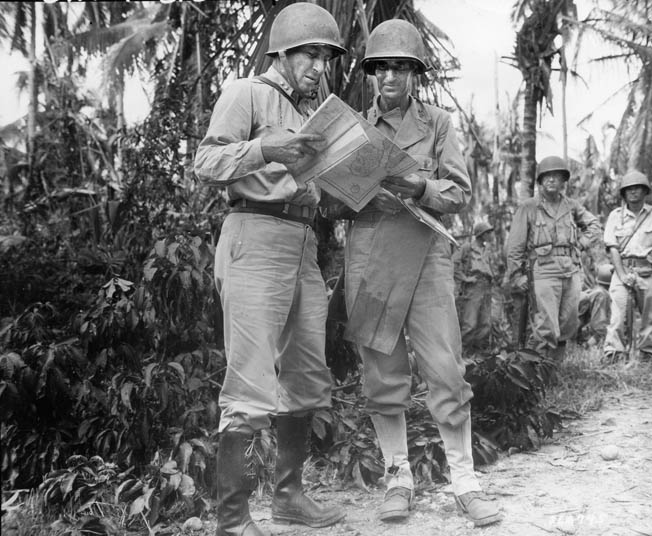
A Bid to Break the Japanese Hold on Breakneck Ridge
For his part, the 63-year-old, German-born Krueger was growing increasingly concerned. Although his four infantry divisions had all but destroyed the original defenders of the Japanese 16th Infantry Division, his intelligence sources reported more and more identifications of enemy units not previously known to be on Leyte. He knew that he had to stop the enemy reinforcement pipeline, and to do that he had to seize the enemy ports on the opposite (west) coast of the island. Driving his X and XXIV Corps west and south, Krueger intended to halt the enemy reinforcements.
Initially his advance went well, but in early November his X Corps (under Lt. Gen. Franklin C. Sibert) hit a strong defensive line at a series of mountains that soon became known as Breakneck Ridge. The ridge was heavily covered in jungle and was composed of high ridges with cliff faces, severely restricting passage. The many crevices and heavy jungle provided excellent cover for the defending Japanese and prevented the Americans from using their tanks, while also preventing good observation for their artillery.
With X Corps, the 24th Infantry Division (under Maj. Gen. Frederick A. Irving) spent the next three weeks, starting November 7, trying to crack what the Japanese called the Yamashita Line. In the course of the battle for Breakneck Ridge, a regimental commander was relieved, and American casualties mounted sharply without commensurate gain.
General Irving, an experienced commander, decided to use extraordinary tactics to break the hold of the crack Japanese 1st Infantry Division on Breakneck Ridge. After consulting with Generals Sibert and Krueger, he sent one of his battalions on a wide flanking maneuver to Kilay Ridge, where it would flank the Japanese and harass one of their supply routes. He sent a second battalion, Lt. Col. Robert Beirne Spragins’ 2nd Battalion, 19th Infantry Regiment, to infiltrate enemy lines and establish a roadblock along the main enemy supply route, known as the Ormoc Road.
Doughboy White Behind Enemy Lines
Colonel Spragins’ men had already been fighting for more than two weeks, having been used as an assault battalion on October 20 when the Sixth Army landed on Leyte. Battle casualties, illness, and heat exhaustion had reduced its number of effectives to less than 700 men, including all administrative personnel.
At the time they received the order to infiltrate and block the Ormoc Road near the town of Limon, they believed that they were on Hill 1525, but no one was sure, given the lack of accurate maps and the thick jungle coverage of the entire area. Spragins, a 28-year-old New York native and West Point graduate (Class of 1939), quickly deduced that his battalion would have to move behind Japanese lines some 4,000 yards. He immediately asked for guides and a food supply, his men not having eaten in more than a day.

Known as Doughboy White from its radio call sign (“Doughboy” for the 19th Infantry and “White” for the 2nd Battalion), the 2nd Battalion began its move on November 10, led by a platoon under 1st Lt. George Whitney of San Francisco.
For two days the troops struggled over fallen trees, thick underbrush, and sharp cliffs. In one of the skirmishes, Lieutenant Whitney killed a Japanese captain who was carrying a dispatch case filled with vital intelligence material; this was sent back to 24th Infantry Division headquarters for evaluation. Avoiding open spaces so as not to be seen by the enemy, and with no trail to follow, the battalion struggled forward. The one day’s ration each man had received just before starting out had to be stretched for two days. Requests for an airdrop resupply went unanswered.
The patrols leading the battalion forward began to encounter more and more enemy patrols, but they soon found a wooded streambed that offered cover and concealment, allowing the battalion to bypass the Japanese. Under strict noise discipline, Spragins’ battalion advanced as stealthily as possible, often covered by the jungle vegetation or nearby noises of battle. Only once did it encounter a group of Japanese, who were getting water from the stream, and these were killed in a brief battle.
On November 12, after two days of marching, Colonel Spragins decided to move his battalion forward on a compass bearing directly to the objective. The native guides were directed to find a trail that corresponded to the bearing and on which the battalion could move forward faster. That morning the battalion forded the Leyte River and moved up a deep gorge before following a trail over the next ridge. Alerted by their guides that they were on a Japanese trail, the battalion remained on high alert. As the scouts moved forward, they came upon a Japanese patrol. The resulting firefight revealed the battalion’s presence to the Japanese.
The Japanese, however, did not know how many Americans were in their rear, nor did they know what they intended to do. They fired blindly into the general area where they thought the battalion was, without success. Captain William R. Hanks led his Company G up the next defended hill and attacked the Japanese flank. Captain Hanks heard a scream and turned to see a Japanese soldier charging him with fixed bayonet. Firing twice, Hanks killed his attacker.
Nearby, Sergeant Peter R. Slavinsky of Pennsylvania saw a grenade land at his feet. Knowing he had seconds to save his life, he scooped it up and threw it back at the enemy.
A strong Japanese force counterattacked but was pushed back. Suddenly, shouts came from the leading scouts. They had at last found the hard-surfaced Ormoc Road. Doughboy White had cut the main supply route to the Yamashita Line.
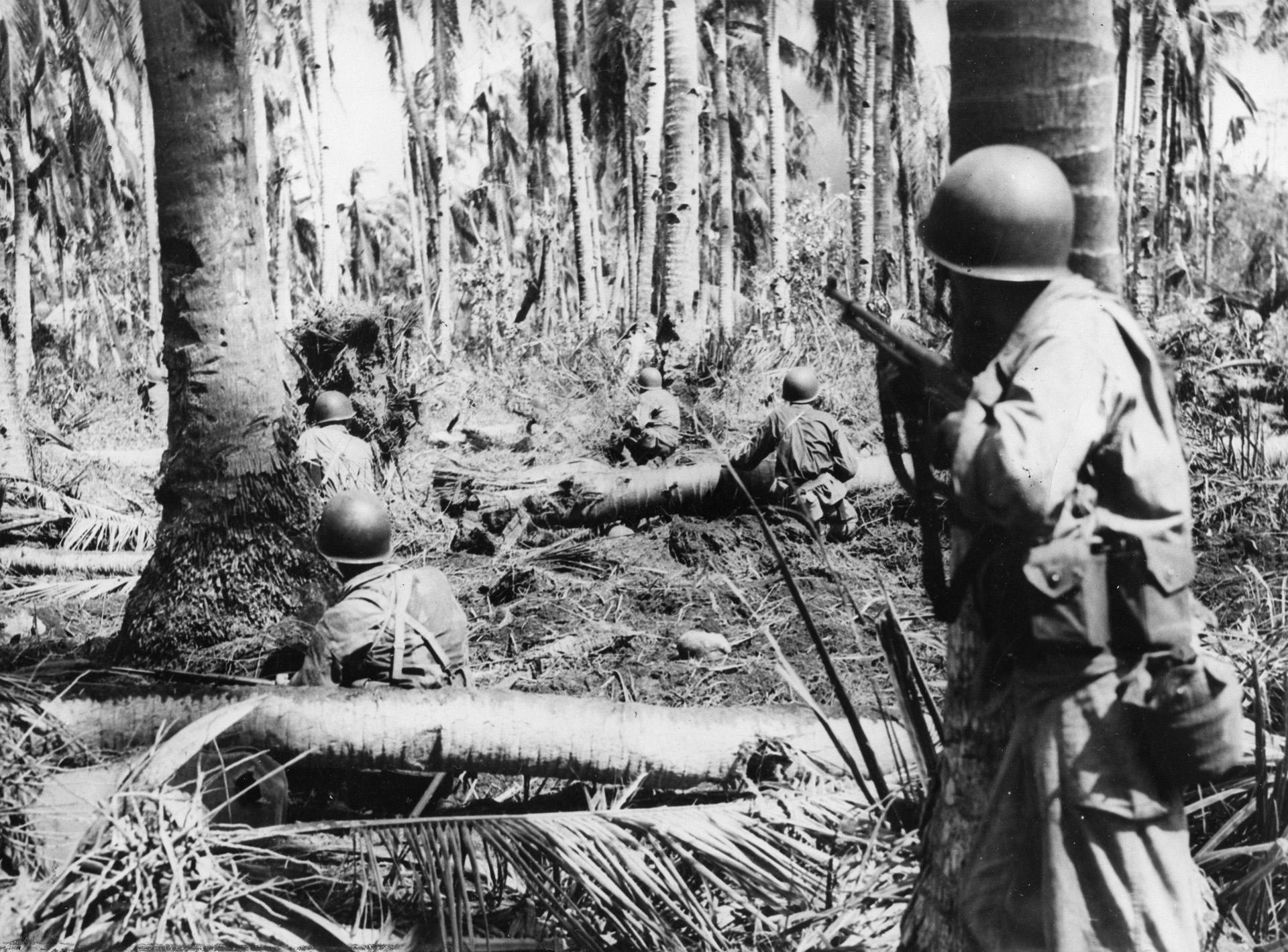
Captain Hanks rushed forward to confirm the objective. Heavy firing continued from across the road, but knowing a frontal attack was suicidal Colonel Spragins called for a thorough reconnaissance before moving across the road, seeking a weak spot in the enemy defenses. Before any could be conducted, however, darkness ended operations for the day. The battalion set up night defenses at the head of a ravine and waited for a Japanese reaction. Artillery fire was registered on likely avenues of enemy approach.
Surrounded by the Enemy
The Japanese were unprepared for the sudden appearance of Doughboy White behind their lines. Usually it was the Japanese who infiltrated their enemy’s rear areas, spreading confusion and cutting supply lines. Now Colonel Spragins’ battalion had turned the tables on them. Combined with the heavy defensive fire of American artillery, this confusion prevented any counterattacks that night, but the ominous sounds of Japanese vehicles moving along the Ormoc Road kept the battalion officers awake much of the night.
At dawn, the fighting flared up again. Enemy mortar rounds fell on the battalion, and patrols encountered groups of Japanese trying to scout out the American position. These groups were killed or dispersed. By noon, the fighting had calmed down. Colonel Spragins took this moment to again seek food for his starving men. Ammunition and medical supplies were also scarce. A resupply airdrop was again requested.
While the request went up through channels, Company F counterattacked a group of Japanese who came too close to the battalion perimeter. The Company F attack hit a strong Japanese force armed with machine guns, mortars, and small arms and was recalled. No supporting fire had accompanied the attack because Spragins wanted to preserve what was left of his small supply of mortar ammunition.
By the afternoon it was apparent from patrol reports that the Japanese had dug in both in front of and behind Doughboy White. The Battalion was now surrounded by strong enemy forces from Japan’s crack 1st and 26th Infantry Divisions. The requested airdrop for November 13 failed to materialize.
Colonel Spragins had his battalion dig in. The soldiers, without food for more than a day and a night, ate palm hearts. Packs were stripped from enemy dead and searched for food. Cooking fires were prohibited, as they would bring down enemy mortar and artillery fire. That night passed quietly, except for the heavy rains that poured daily during the next few weeks on Leyte and added to the misery.
Failed Supply Drops
The following morning, patrols discovered more enemy casualties, and several of the packs carried by the dead contained food. While the patrols were busy, Captain (Chaplain) Lamar Clark of Texas conducted funeral services for two of the men killed the day before. After cutting several enemy communication wires, the patrols returned to report several strong well-armed Japanese groups around the perimeter. They had also seen enemy supply convoys moving in both directions along the Ormoc Road. One patrol leader reported that he had discovered some undefended high ground, which offered excellent observation of the road.
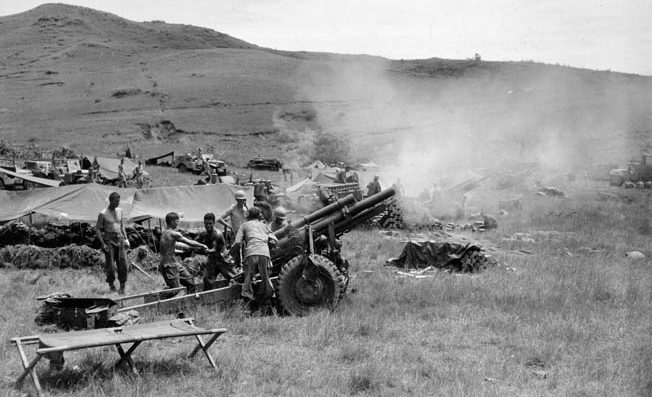
That afternoon came the first resupply drop. The exhausted and starving men of Doughboy White watched in frustration as the entire drop landed well within Japanese lines. A quick radio message corrected the drop zone, resulting in a drop between the opposing forces. The Japanese, realizing that the American pilots were looking for some sign to differentiate between friend and foe, stopped all their firing. The thick jungle did the rest. The third supply run went entirely to the Japanese. The fourth drop landed again between the two groups. The American aircraft, now empty, turned for home.
Captain Hanks sent out patrols to recover what they could from the supply drops. They were specifically directed to seek out radio batteries, as the ones the battalion had were running low on power. Without radio communication, Doughboy White was doomed, as it could not direct artillery support or call in supply drops.
Skirmishes broke out between Americans trying to recover supplies and the Japanese trying to prevent them. Sergeant Wesley Greer was busy detaching the parachute from a supply bundle when a Japanese soldier came from behind a tree and attacked. Greer eliminated the enemy soldier and dragged off his 100-pound prize. Private John Miller, of the Bronx, New York, found a box of radio batteries but had to fight his way back to the battalion perimeter with them.
After the battle, an inventory showed that a few radio batteries, some medical supplies, 64 mortar shells, and six cases of rations had been recovered. There were now 200 meals for 700 men. The men of 2nd Battalion, 19th Infantry watched helplessly as the Japanese went about recovering the bulk of the supplies. That night four men were killed by friendly artillery fire.
Capturing Saddle Hill
Colonel Spragins decided during the night to move his battalion to the high ground discovered by his patrols; his mission was to interdict the Ormoc Road, which he could not do from his present location. On November 15, he put his plan into effect. Determined to prevent the Japanese from learning his strength, which he hoped would make them more cautious, Spragins refused artillery support and had patrols lead the battalion by covered routes to what became known as Saddle Hill.
By early morning Company G was attacking Saddle Hill using only Company G. Reinforced with machine guns from Companies F and H, Company G was led by Colonel Spragins while the rest of the battalion remained under cover commanded by the executive officer, Major Charles Issackson of South Dakota.
As Company G moved to the attack, the battalion rear echelon encountered a group of Japanese intent on outflanking the battalion. Major Isaackson directed the defense and stood exposed to ensure he saw everything.
Nearby, Sergeant Edward Gauthler from Texas noticed a bush moving and shouted to the major, “Look out!” Isaackson ducked just in time to avoid a bullet that hit a tree at the level his head would have been had not Gauthler warned him.
Meanwhile, Company G crossed the Ormoc Road and sought a way up Saddle Hill. An enemy pillbox was knocked out with rifles and grenades, and Captain Hanks then organized an attack to gain the hilltop. As the skirmish line moved up the hill, Japanese strongpoints halted the advance. Hanks called upon his mortars while Colonel Spragins sent Company E to find a quicker way up the hill.
Company E did find another way, which was easily climbed since the Japanese were concentrating on Company G to their front. Company E reached the hilltop and began eliminating the defenders.
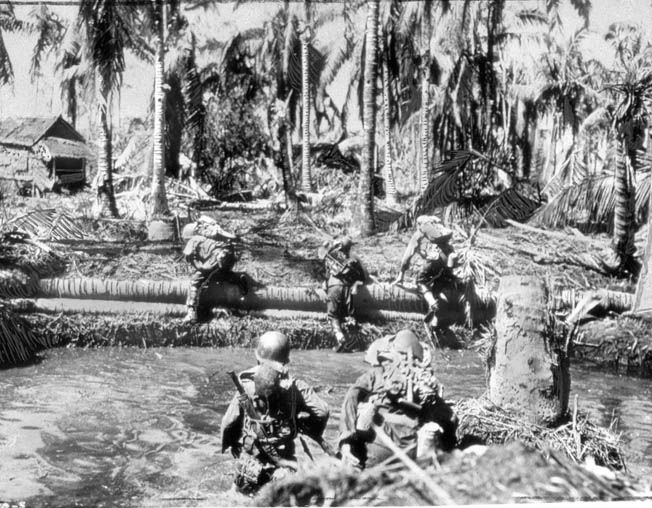
Captain Hanks pulled Company G back and then circled the hill to join Company E, clearing the slope. By late afternoon both companies were digging in atop Saddle Hill. The leading elements of the new perimeter were within 10 yards of the Ormoc Road.
Ambush on Ormoc Road
Colonel Spragins then ordered Major Isaackson to take the rest of the battalion, remain on the east side of the road, and form a new perimeter as a reserve force and a place to care for the wounded. Isaackson’s group soon became known as the East Perimeter, while Colonel Spragins’ became the West Perimeter. The East Perimeter was not to engage the Japanese unless it was absolutely necessary.
Again, Spragins wanted to hide his true strength from the enemy. Communications were established with the 2nd Battalion, 34th Infantry, which was on a similar mission on Kilay Ridge.
The Japanese did not get the word about the new American position quickly. Nobody had informed them that Ormoc Road, their main supply route, had been cut by the Americans. Shortly after midnight on November 14, a convoy rolled down the Ormoc Road. The Japanese were completely unaware of the danger into which they were driving.
Because of the pitch darkness, the Americans could see nothing from the West Perimeter. Estimating the range by the sound of the truck tires, American machine guns opened up on the roadway. A considerable amount of noise and shouting resulted, indicating that the trucks were carrying troop reinforcements for the Yamashita Line defenses. The Japanese quickly pulled back up the road.
Colonel Spragins immediately ordered a cease-fire, not wanting to give away his position or strength. He issued orders that his men were to fire only when they had a clear target and to stop firing immediately when the target disappeaed. This would not only conceal their strength but also conserve their limited ammunition supply. Although the Japanese now knew there was a blocking force on the west side of the Ormoc Road, they were still unaware of the East Perimeter.
A few hours after this first encounter, a column of troops was heard marching down the Ormoc Road. Once again the Americans opened fire. After the commotion on the road stopped, the Americans listened as Japanese medical personnel hauled away the dead and wounded.
Later that morning, two Japanese field artillery pieces opened fire on the West Perimeter. These were soon countered by American artillery guided from observations made in the West Perimeter.
The enemy barrage tightened the nerves of Colonel Spragins’ men. They had not eaten in more than 27 hours and were exhausted from marching through the jungle and the fighting at Saddle Hill. Some soldiers were too weak even to walk. Their declining alertness was of great concern to Spragins, who feared his diminished battalion would be overrun by the enemy.
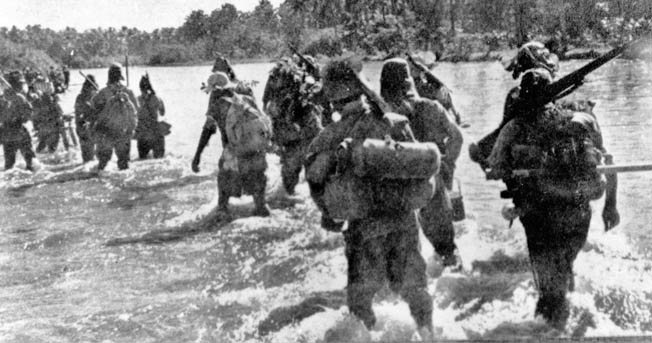
Holding the Roadblock
Patrols sent out to contact the battalion on Kilay Ridge in the hope of obtaining supplies and evacuating wounded found that the hills and jungle between the two American forces were thick with Japanese troops. There was no way a line of communication could be opened between the two American forces.
The two perimeters of the 2nd Battalion, 19th Infantry were also separated from each other. Three attempts to pass between them resulted in fights with the Japanese. With the battalion aid station in the East Perimeter, those wounded in the West Perimeter went without medical aid beyond what could be provided by the company aid men. The wounded lay in water-filled foxholes exposed to enemy fire and the constant rain. Although they did not complain, their plight was apparent to all.
Even obtaining water in the midst of all the rain was a dangerous chore; it had to be brought up by combat patrols from a stream at the bottom of a nearby hill. The water was carried in helmets to avoid the considerable noise made by American canteens.
That afternoon, a carrying party from the Regimental Cannon Company arrived from the rear with chocolate bars and cigarettes. Then an airdrop was conducted, and a portion of the supplies were recovered. Both of these were heavily opposed by enemy fire.
One of the incoming mortar rounds landed near Colonel Spragins, covering him with mud and earth. Although wounded twice in this campaign, he remained in command of Doughboy White. After things quieted down, the battalion enjoyed its first meal in 48 hours, but that night several seriously wounded men died.
The next day, November 17, the Japanese tried a different tactic. Instead of boldly moving large groups of men and material down the blocked road, they began to send small groups alongside the road, trying to filter past the roadblock. The Americans spotted these groups and opened fire as they attempted to pass.
Japanese patrols constantly probed the West Perimeter defenses, trying to locate a weak spot to exploit. That afternoon another airdrop landed 83 cases of rations within the East Perimeter. The Cannon Company detachment was used to bring the West Perimeter’s share across the road.
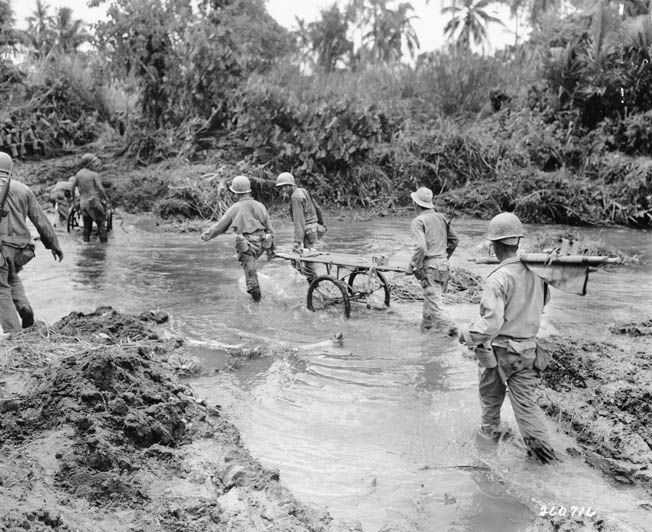
So exhausted were Spragins’ men that some of them fainted while eating. Colonel Spragins and several of his officers gave their shares to the wounded. No radio batteries were recovered, and the battalion’s sole generator had rusted out from the constant rain.
Toward darkness, two Japanese tanks loaded with supplies ran the roadblock. So surprised were the Americans that the antitank gunners could not fire in time. Later, these two tanks ran the roadblock in the opposite direction. This time the Americans were ready for them, and one tank was damaged.
Frank Fantino, a machine gunner from Connecticut in Company H, recalled, “Later, after we had fired at a Japanese weapons carrier that had come down the road toward us, one of their tanks came around the bend and fired a round at us. The round hit just below us with enough force to lift the machine gun a couple inches, but the round didn’t explode! Then they fired another round, which went just over our heads and hit the hill above us. But that round didn’t explode either! The tank then left.”
Again, Japanese artillery opened fire on the West Perimeter, but counterbattery fire knocked the enemy guns out. This day saw the last attempt by the Japanese to move troops or supplies past the Doughboy White roadblock.
November 18 brought word that the 32nd Infantry Division (Maj. Gen. William H. Gill) had arrived on Leyte and was attacking Breakneck Ridge. The message also said that a battalion of the 34th Infantry Regiment was trying to break through to Doughboy White with food and supplies. If successful, it would also evacuate the wounded.
A few hours later the relief force arrived. While it was being welcomed, another airdrop was made, but once again the bulk of the supplies landed in Japanese-held areas. Patrols from both sides tried to recover as much as possible, and several skirmishes broke out. Americans and Japanese were once again battling over food. That night, three Japanese tanks ran the roadblock three times. The American bazooka teams fired the last of their ammunition and scored some hits, but none of the enemy tanks was disabled.
November 19 saw preparations being made for the evacuation of the wounded. Rations for two days per man had been recovered and distributed. By midday, the carrying party departed with 23 wounded men on litters and another 27 walking wounded. The party soon disappeared into the jungle.
On the road, four Japanese tanks ran the roadblock again, this time firing at the West Perimeter as they passed. After they had turned north, a group of Japanese soldiers came from the direction of Breakneck Ridge. They seemed unaware of the American roadblock and were caught in its fire on the road. The column dispersed and tried to reform but was shattered again by American mortars and machine guns.
Colonel Spragins’ Withdrawal
The morning of November 20 brought orders to Colonel Spragins to withdraw his battalion to Hill 1525, from which it had begun its odyssey. Just as the colonel was digesting his new orders, a group of Japanese made a direct attack on the West Perimeter. In a fight lasting over an hour, the Japanese were halted, but Spragins was suspicious of the enemy’s intentions and ordered reinforcements to other sections of the defensive line.
Just after he did so, a large enemy group attacked the East Perimeter in a banzai charge. American fire halted it within a few yards of a breakthrough, and the Japanese left behind more than 300 dead. Three more attacks met the same fate. Some of the men in Doughboy White began to think the enemy knew of the withdrawal order and was trying to finish them off before they could get away.
But they didn’t. By mid-morning Colonel Spragins’ half of the battalion crossed the Ormoc Road once again, one man at a time, running to avoid enemy fire. Company G covered the withdrawal and soon the two groups were reunited within the East Perimeter. The battalion moved back to the Leyte River, in flood stage. No ford was discovered, so the men used bamboo vines tied together to cross the raging stream.
Spragins crossed the river twice, once to lead the forward elements across and a second time to assist with the wounded men. The crossing took time but was accomplished by mid-afternoon. Not one weapon had been lost or abandoned. The battalion then moved to some nearby high ground and settled in for the night.
The march resumed the next day, and Colonel Spragins received welcome news from some local natives. They reported that a day earlier another group of Americans, carrying the battalion’s wounded, had safely passed the same way. The battalion continued toward Hill 1525. Within some 600 yards of it, the men heard firing, possibly indicating that the carrying party had been ambushed by the Japanese.
Ordering the two groups to join forces, Spragins waited until Major Carl E. Mann brought the carrying party safely back into the battalion lines. Mann had lost seven men killed and added 16 wounded to his load during his four-day march to the rear.

November 22 was spent getting the wounded to the crest of Hill 1525. Many of the men of Doughboy White were exhausted, again going without food for 48 hours. The litter party, still carrying the wounded men on stretchers made from saplings and parachutes, was equally exhausted. Many had lost their shoes to the rain and thick, glutinous mud of Leyte; their boots had simply fallen apart. Some wore shoes taken from Japanese casualties. Additionally, some 113 men were suffering from jungle rot, foot ulcers, dysentery, and various fevers.
The March to Pinamopoan Point
Having successfully reached Hill 1525, Colonel Spragins was now ordered to move his battalion to a rest area near Pinamopoan. Reports indicated that there were Japanese troops between him and the rest area. Once again Doughboy White moved out in combat formation, patrols leading the way and ready to clear any enemy forces blocking their path. Protected by three rifle companies, the litter party followed close behind. Each litter had a carry party and an assigned group of riflemen for protection.
Enemy fire occasionally struck the column, but no attack developed, and a change in route brought it safely to the coast. The battalion made its painful way to the rest area. Behind them the litter party was less fortunate as incoming knee-mortar fire killed two men and wounded three others. Snipers killed another of the walking wounded and a soldier accompanying him.
The depleted column passed through Pinamopoan on November 24. Even after arriving in the reserve area, the men were forced to march another mile to Pinamopoan Point because enemy machine-gun fire prevented landing craft from picking them up any closer to the front. Wounded men were immediately evacuated, including 241 officers and men who had made the return march unaided. Those remaining were treated to their first cooked meal in 14 days: peas, carrots, bully beef, and coffee. It was Thanksgiving Day.
The battalion had killed hundreds of Japanese soldiers, but the exact number could never be established since the nature of the battle precluded a count. The Japanese removed their dead whenever possible. The men of Doughboy White returned to Tanauan to rejoin their regiment and prepare for their next assignment.
For their feat of going behind enemy lines and successfully cutting the enemy’s main supply route, helping to crack the Yamashita Line under the worst possible conditions, the men of Doughboy White were awarded the Presidential Unit Citation.
Lieutenant Colonel Robert B. Spragins would be awarded the Distinguished Service Cross for his leadership of the 2nd Battalion in November 1944. The citation reads: “The President of the United States takes pleasure in presenting the Distinguished Service Cross to Robert B. Spragins, Lieutenant Colonel, for extraordinary heroism in connection with military operations against an armed enemy while serving with the 19th Infantry Regiment, 24th Infantry Division, in action against enemy forces from 10 to 23 November 1944.
“Lieutenant Colonel Spragins’ intrepid actions, personal bravery, and zealous devotion to duty, exemplify the highest traditions of the military forces of the United States and reflect great credit upon himself, the 24th Infantry Division, and the United States Army.”
He later achieved the rank of brigadier general and died on November 1, 2003, at the age of 87.
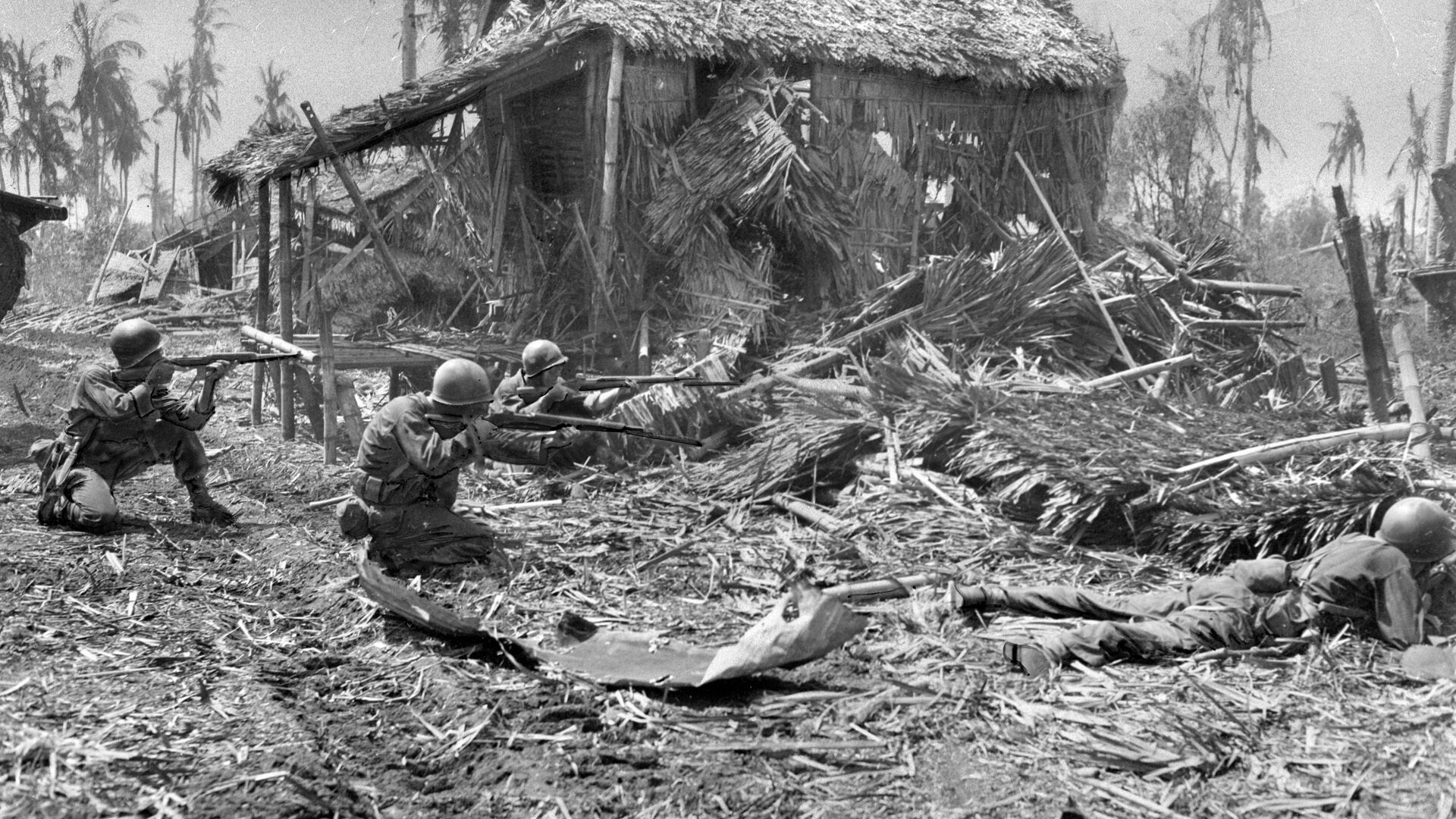
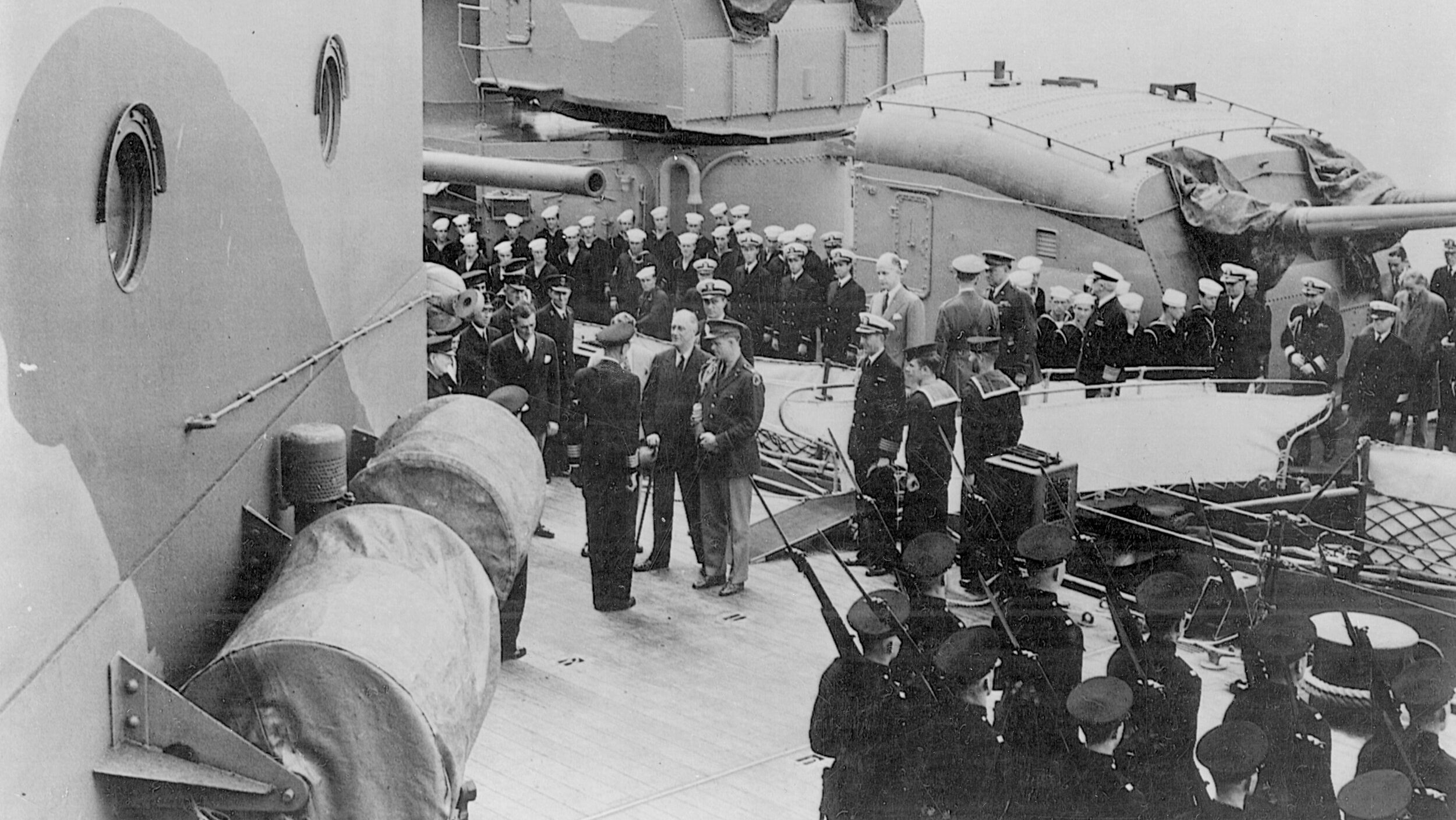
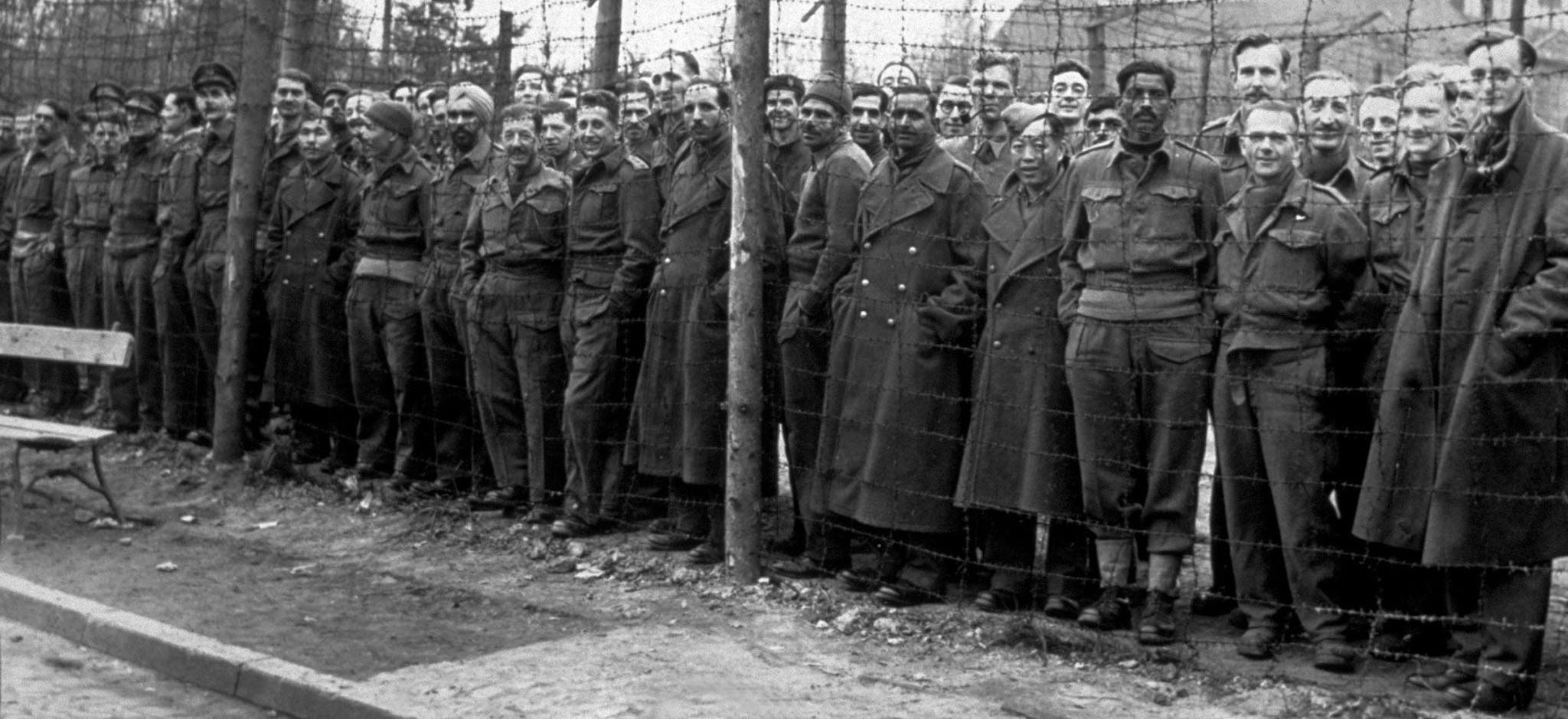
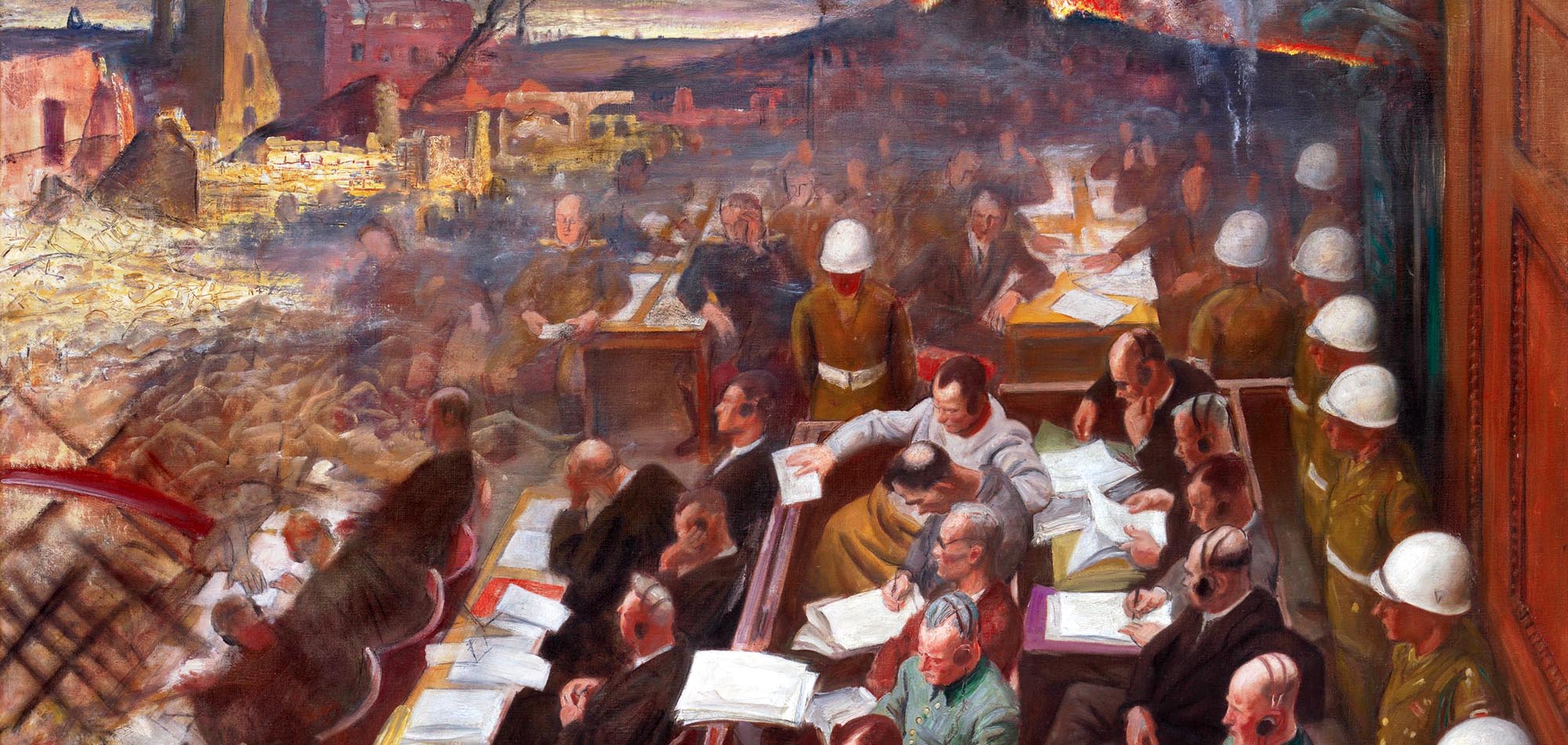
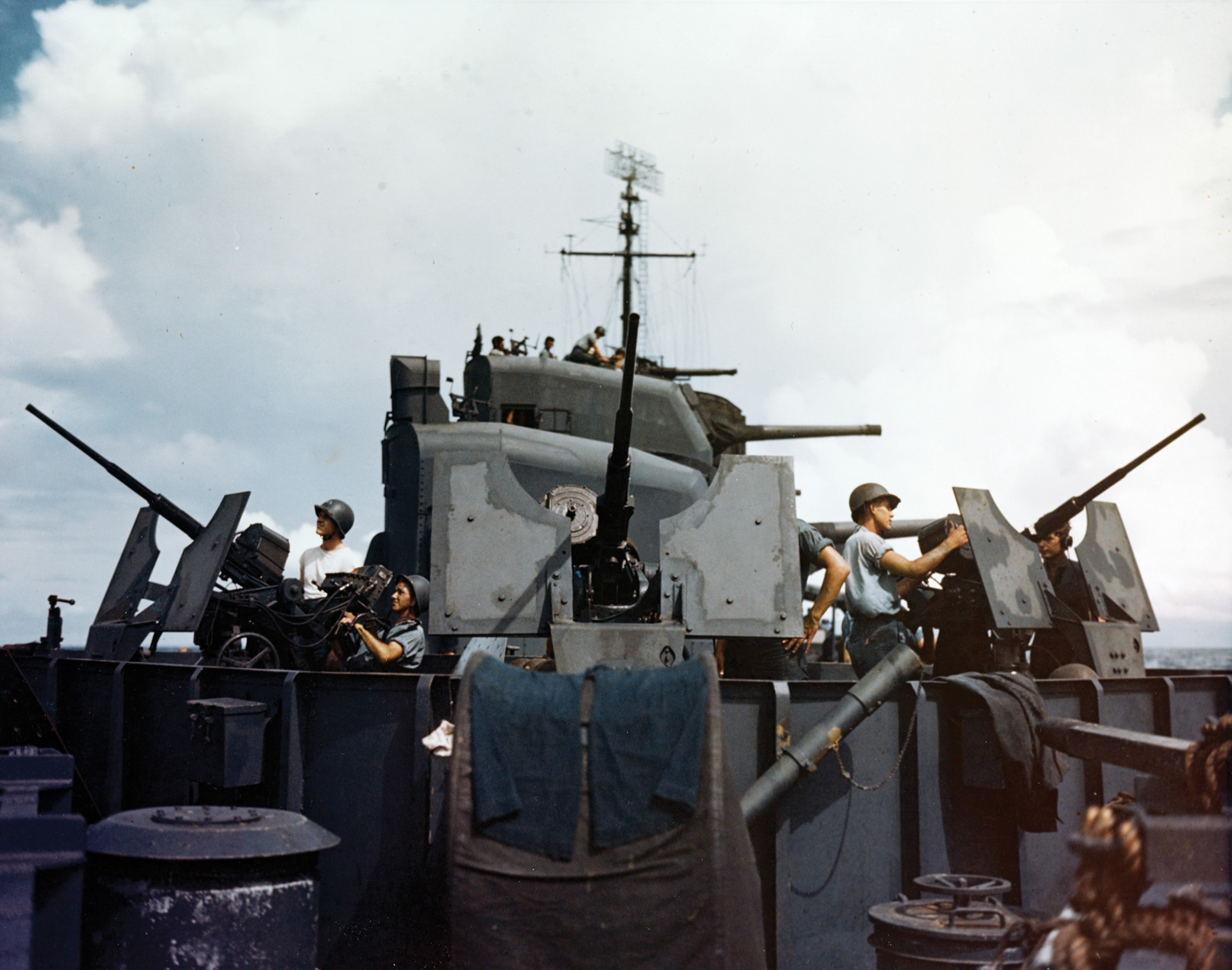
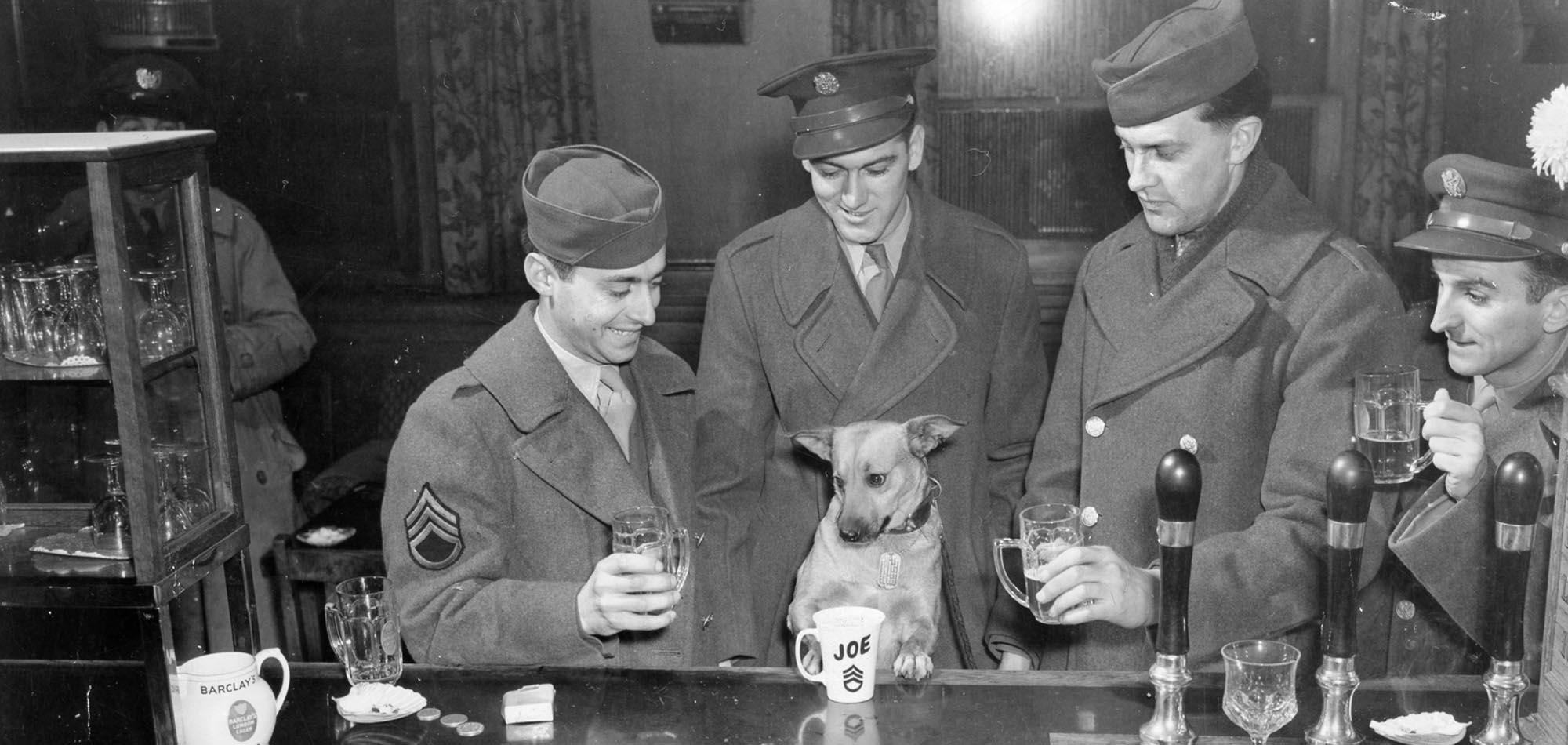
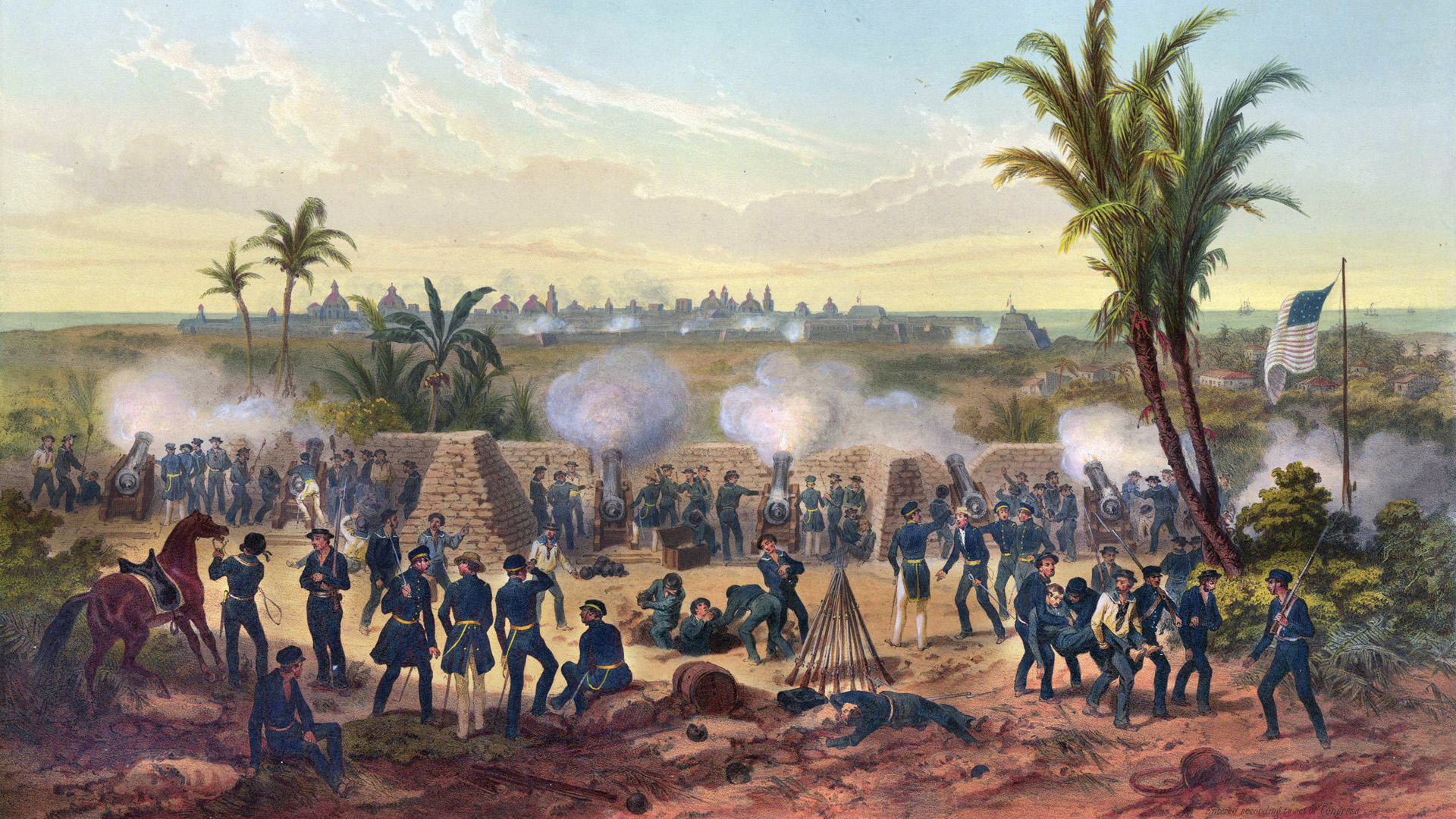
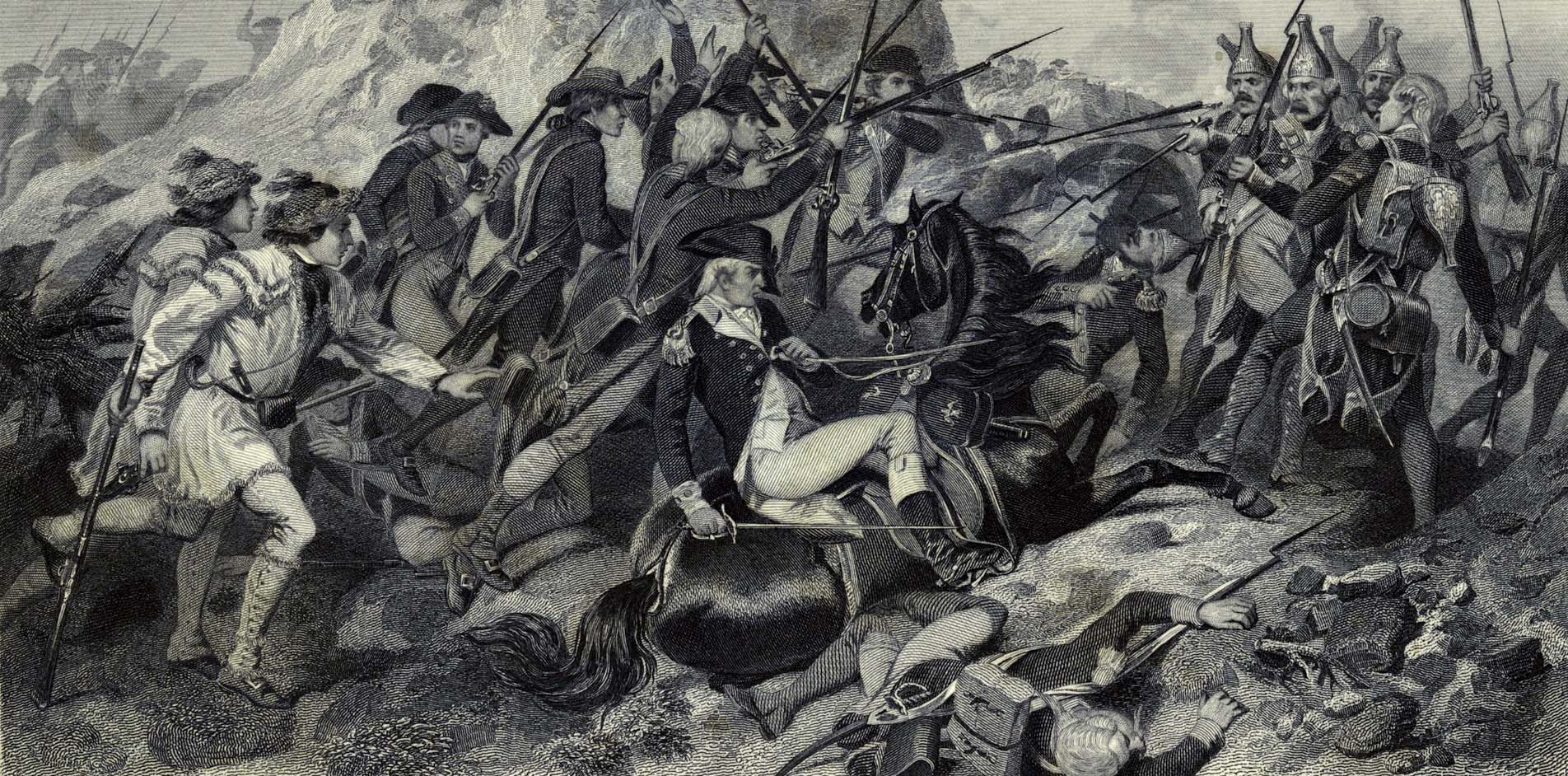
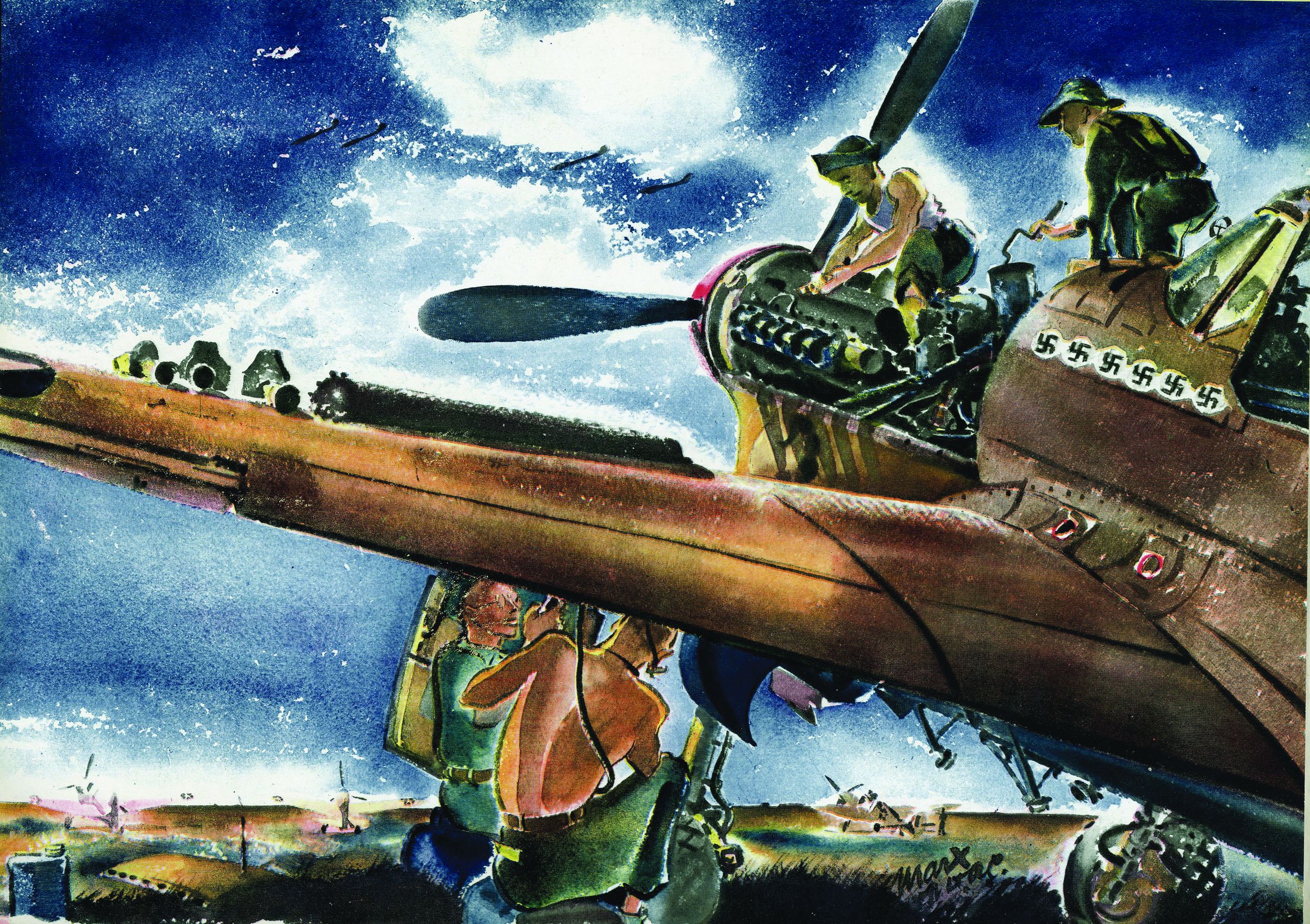
Hello,
I realize this article is three years old, but I have read and re-read it many times due to a family connection. I would like to ask if the publishers would mind providing the source for the photo of the medics crossing the stream. I am fairly certain one of the medics is a close relative, for whom we have no photos from that period. Would it be possible to let me know where the photo came from and if there are any names associated with it. Thank you in advance.
The photo is likely a Signal Corps photo from the National Archives collection. If we find more information we’ll post it here.
My dad was there also!!